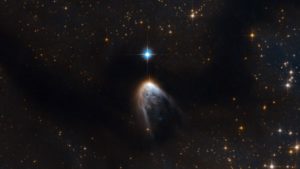On June 28, 2016, Omar Almaini and his team from the University of Nottingham released the final images of what they call the Ultra-Deep Survey (UDS) performed over an area of sky about four times the size of a full moon. The scientists observed 250,000 galaxies in this region of the sky, in the direction of the constellation Cetus the Whale. Several hundred of these galaxies are so distant that the light we perceive is from the first billion years after the Big Bang.
The team says its goal has been to learn about the formation of galaxies and track their evolution over the past 13 billion years. (From earthsky.com by Daniela Breitman)
Did you get that folks? In just one area of the sky they observed 250,000 galaxies. Don’t fry your brain, but think about what that means for the entire observable universe if we could move the telescope and observe the universe in a complete sphere around our planet.
Earth scientists believe our planet is just over 4.5 billion years old. Life first appeared on earth at about the 3.8 billion year mark. The genus homo appeared approximately 2.5 million years ago, and homo sapiens (that’s us as we know us today) about 200 thousand years ago. It took less than a billion years for life to develop on a new planet, and about 1.3 billion years for that life to evolve sentience.
If the Sol system happens to be a younger-than-average star system, (there is building evidence that it is), then it would be entirely plausible to think that somewhere out there, a planet has an intelligent species far more developed than we are. At the very least, who in their right mind could believe earth would be the only planet in the universe with intelligent life?
The biggest problem, and one that still has our best and brightest minds completely baffled, is that even if we could discern intelligent life (we don’t yet have the technology to do that), we might never be able to communicate effectively, let alone go there and meet them. Most astrophysicists believe travel to distant planets will likely never be possible, at least within the physical lifetime of a single person.
For the foreseeable future, it is only through the free range of the science fiction mind that human beings will travel the galaxy and meet all manor of exotic sentient life.
Live long and dream big.
